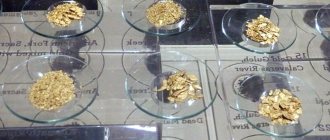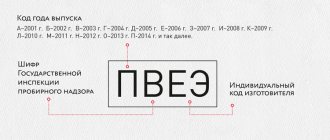Gold futures are one of the types of futures contracts, which are one of the most attractive investment and earnings instruments.
A futures contract for the purchase/sale of an asset is concluded on a specified (clearly defined) future date at the current market value. The underlying assets that are the subject of the contract in the process of concluding a contract can be bonds and shares, currency and goods (gold in this case). It is easier to understand the essence of futures using an example: for example, a farmer planted wheat and, while it is growing, in the spring he agrees to sell the crop in the fall at today’s price of 150 rubles. Forecasters give a forecast for a favorable summer and a large harvest, so there is an assumption that there will be a lot of wheat and its prices will fall greatly, but the farmer does not want to sell for 50 rubles.
Therefore, in the spring he agrees to fix the price for selling the goods in the fall. It turns out that the futures contract fixes a certain price and protects the interests of the seller. At the same time, the goods will be shipped much later than the date of conclusion of the contract, but within a clearly specified time frame.
If you study history, many American and European markets were based precisely on agreements between suppliers of goods and merchants. The first paper contracts appeared simultaneously with the advent of writing. Dated several centuries BC, cuneiform tablets from Mesopotamia can be considered the first prototype of futures.
Futures contracts are often used for investment. Gold futures (Gold) is a regular exchange transaction in which 2 parties take part - seller/buyer.
The main distinguishing feature of any futures is the lack of desire on the part of the buyer to become the real owner of the physical commodity. Futures trading is carried out without the actual delivery of goods, and earnings are made through fluctuations in contract prices.
Main benefits of futures trading:
- A large selection of instruments for trading on various financial exchanges, opportunities for portfolio diversification.
- High liquidity of futures, which makes it possible to use different strategies in your work.
- Lower commission level.
- Guarantee collateral – when purchasing a futures, a trading participant invests less money than in the purchase of a real commodity: from 2 to 10% of the price of the underlying asset.
Forces of supply and demand
For more than a decade, most of the supply of gold comes from gold mines (about 73%), while demand comes from the jewelry industry (64%). Other factors and forces also influence the level of demand/supply: net producers, Central banks, exchange-traded investment funds. But their influence on the current situation in the market is more situational and changes significantly from year to year, which is noticeable even in quarters.
So, for example, in one quarter the demand for gold as a commodity by exchange-traded investment funds may be greater than the needs of the jewelry industry, while at another time the demand is approximately equal to the supply of gold mines.
While the World Gold Council's physical supply/demand data is clear, jewelry demand and mine supply should directly correlate and influence the price of gold. But this usually doesn't happen.
On the graph you can see that the jewelry industry’s demand for gold decreased and increased, regardless of the supply of miners. Mine production volumes gradually increased, the cost of gold increased 6 times over the same period. Thus, it can be seen that the supply/demand forces of the jewelry industry and mines do not affect the medium/long term price of the metal.
But in a very long term, there is a correlation between the price of gold and its production due to the fact that it takes more than 10 years to put a gold mine into operation.
The price of gold in the medium/long term was influenced by the quantitative easing program (in English it sounds like quantitative easing, briefly QE) of the US Federal Reserve, which was launched after the economic crisis and was supposed to stimulate lending, reduce interest rates, and further repurchase from the asset market to the balance sheet Fed.
The program was implemented in stages: QE1, QE2 and QE3, carried out by the Federal Reserve of America from 2008 to 2014. The price of gold on the market significantly depends on the launch and success of the quantitative easing program and the passage of its subsequent stages. And it was in 2014, when the quantitative easing program in the country was curtailed, that gold fell sharply in price during the trading session after the news was released.
Story
For thousands of years, the idea that gold was a commodity did not occur to people. The precious metal served as a measure of value and a means of payment. In the Middle Ages, gold was compared to only one other physical asset that played the role of money: silver. Accurate information has been preserved about changes in the price ratio of the two main noble metals from the 12th century to the present day. According to medieval traders, silver had 15 times less purchasing power than gold. Currently, this ratio fluctuates between 50-80.
The danger associated with the transportation of precious metals has led to the emergence of a cashless payment system. Its inventors were knights who belonged to the Order of the Templars. Soldier-monks accepted gold from merchants and travelers for safekeeping and guaranteed its receipt in any of the numerous branches of the military-religious organization. The Templar banking system issued special documents to its clients that certified the possession of a certain amount of precious metal. These receipts marked the beginning of the paper money system that developed in subsequent centuries.
Gold Futures Contract Specifications
Gold futures can be purchased in the format of standardized, regulated exchange-traded contracts.
The main gold futures available to investors are:
- LME is the futures market of the London Metal Exchange, which is part of the New York Mercantile Exchange (COMEX) as a division.
- Tokyo Mercantile Exchange futures – TOCOM.
- Chicago Mercantile Exchange (CME).
- Commodity exchange – Commodity Exchange (COMEX).
Volumes of metal futures, which are traded on the London and Chicago Mercantile Exchanges, as well as on the COMEX, are measured in troy ounces, prices are set in US dollars and cents based on one troy ounce of 995 gold. On the Tokyo Stock Exchange, futures are measured in kilograms and grams of 999 fines, and the price is determined in Japanese yen.
Trading is carried out during the current month; the next 2 calendar months; during any February, April, August, October (but within 23 months); any June, December (but within 72 months), counting from the current one. Contract trading stops 3 days before the start of the next calendar month.
One standard gold futures contract (ticker GC) has a volume of 100 troy ounces (equivalent to approximately 3.11 kilograms). Also used are E-mini Gold mini contracts (this is the ticker QO) with a volume of 50 ounces. The delivery micro contract is designated E-micro Gold (this is the ticker symbol MGC) with a volume of 10 ounces. All smaller than standard contracts are traded in the same months as the regular contract.
The price increment of a standard futures contract for gold on a futures exchange is US$0.10 or ¢10 (this is the tick representing the minimum change in value). When buying/selling a contract, profit/loss is determined by the number of ticks by which the price changes. To calculate the loss/income for each contract that is traded, first find out the cost of one tick.
Calculation of tick value for a contract:
- One standard futures contract has a tick size of 10 US dollars (100 troy ounces x 0.10). This means that each price movement by 1 tick will give a profit/loss of $10, with a change by 10 ticks – $100, etc.
- One mini contract – tick size 25 US dollars (100 ounces x 0.25). This means that each tick of the price will give a loss/profit of $25, if the price changes by 10 ticks - $250, etc.
- Micro contract – tick size 1 dollar (10 ounces x 0.10). That is, each price movement will give 1 dollar of profit/loss, and if the price changes by 10 ticks - 10 dollars.
The amount of funds needed to open a position intraday is the intraday (also known as intrasession) margin. The margin may be different, depending on the conditions of a particular broker, and may change. To trade a standard lot of gold (aka ticker GC) intraday, you need to have $1,000 and a certain amount for possible drawdowns.
Typically trade intraday (during the same trading session) and close positions before completion. When the position remains open until the next session, the transfer is carried out and initial and maintenance margin requirements are set. In this case, there should be more money in the trading account than in the case of intra-session margin.
Margin requirements for trading gold futures may change periodically in response to fluctuations in the value of the gold price to ensure adequate margins are maintained in participants' accounts.
As a rule, exchanges and brokers warn about changes in margin requirements at least 24 hours in advance: for example, in September 2021, requirements for CME Group gold futures contracts increased and in December 2021, the maintenance margin for a standard contract was equal to $4,450.
Analytics is for the elite?!
Of course not. And if you are interested in investing in gold, then over time you will be able to make your own forecasts, allowing you to understand what to expect from the precious metals market - whether the price will go up or down. Independent analytical conclusions can be drawn only on the basis of economic, political and other knowledge, intuition, and the ability to evaluate vast amounts of diverse information. This requires experience, which comes with time. First, you need to familiarize yourself with the primary characteristics of the gold market and listen to the opinions of experts.
More articles on the topic:
- Is it worth investing in platinum?
- How to sell gold coins and bars correctly
- About investment coins “for dummies”
How to use futures
Gold futures are considered a universal means of hedging transactions with precious metals. By selling futures, the seller insures against possible decreases in gold prices in the future. This provides a number of advantages, but also involves nuances. You can also trade gold futures on the Moscow Exchange.
Additional payments for gold futures:
- Exchange commission - so, the Moscow Exchange takes 1 Russian ruble from the seller when concluding a contract for 1 troy ounce, and 50 kopecks per trading day when opening/closing positions.
- The guarantee is always there, in this case it is equal to 6% of the contract value: the amount is blocked in the account until all obligations cease.
- Broker commission - its size is set in accordance with the tariffs, on average equal to the amount of the exchange fee.
To understand the essence of payments, you can consider an example. Thus, by selling 1000 contracts for refined gold per day (1000 troy ounces, the price of one is 1220 US dollars) with a contract expiration date of January 2015, the trader insures himself against a fall in price. To conclude a contract, the trader must make a contribution of 6% - this is 1220 x 1000 x 6% = 73,380 US dollars.
If the next day gold prices fall by $1 to $1,219 per ounce of gold, the trader will receive the difference as a result of the trading day (this is variation margin).
Types of futures contracts:
- Estimated – delivery of goods is not actually expected. Upon expiration of the contract, profits/losses are recalculated and funds are credited/debited.
- Deliverable – involves actual delivery of the underlying asset. The seller agrees with the buyer to conclude a deal for the supply of gold at the current price in six months, for example.
Futures is the current contract price. While this paper is in circulation, the value may change.
Here you need to distinguish between the price of the futures contract and the underlying asset. They are dependent, but these are different concepts. Thus, the futures price can rise and be lower/higher than the underlying asset, so it is formed according to circumstances.
Well
The so-called London fixing is traditionally considered the global benchmark for the cost of cash yellow metal. The results of trading held in the capital of Great Britain are published twice a day. Participants in the transactions are large dealers. The gold chart on the New York spot market often differs from the London fixing. The organization of American and British trades equally lacks transparency. These facts indicate that there is no reliable information in the world about the gold rate on the spot market. A small number of large wholesale dealers are quite capable of joining forces for the purpose of price manipulation.
Precious metals futures transactions cannot serve as a price guide because most do not result in delivery of the physical commodity. This suggests a conclusion that the global financial elite is not interested in creating a transparent cash gold market.
Basics of gold trading on FORTS
FORTS is an abbreviation that stands for “Futures and Options of the Russian Trading System” (FORTS). In English, the decoding indicates the following meaning: “Futures&Options on RTS”, because FORTS appeared as a result of the merger of the St. Petersburg and RTS stock exchanges. It was with the emergence of this platform in 2001 that the Russian derivatives market began to actively develop.
Today, futures of the most liquid securities of the Moscow Exchange are traded on FORTS - these are shares of Sberbank, Gazprom, Rosneft, Norilsk Nickel, Lukoil, etc. Futures on indices and commodities are also traded. FORTS gold futures offer the largest selection of instruments for making transactions for the sale/purchase of precious metals in the country.
The main advantages of using FORTS:
- A good opportunity for beginners who have small amounts of funds (here you can start trading with 15,000-30,000 rubles).
- Gold can be easily and quickly converted into money.
- You can work at any time of the day, and late too (when Western stock exchanges are operating).
- Thanks to the low guarantee, a trader can manage capital that is many times greater than his own, earning an appropriate profit.
Gold futures are an interesting and definitely worth attention instrument that can be successfully used for investing and making money, provided that you study the features of trading and the algorithm for making transactions.
Russian realities
The announcement of gold quotations by the Central Bank of the Russian Federation is carried out every day, exactly at 14:30 Moscow time. The data is published on the pages of the official Internet resource of the Central Bank and is duplicated by all federal information agencies. These set prices are measured in rubles and include the costs of transporting the precious metal, clearing customs and other things.
The Central Bank is not obliged to purchase or sell gold according to the generated quotes, so they are a kind of convention. Other banks take them as a starting point and set their own prices. Thus, Sberbank in its quotes takes into account the current Russian demand for precious metals, the inflation rate and data from leading international exchanges.










